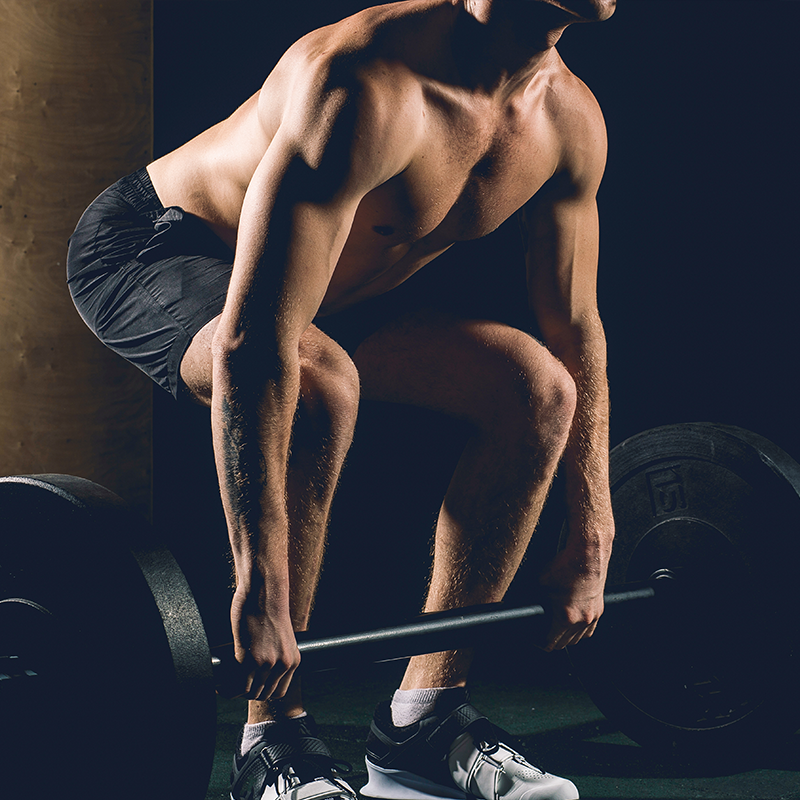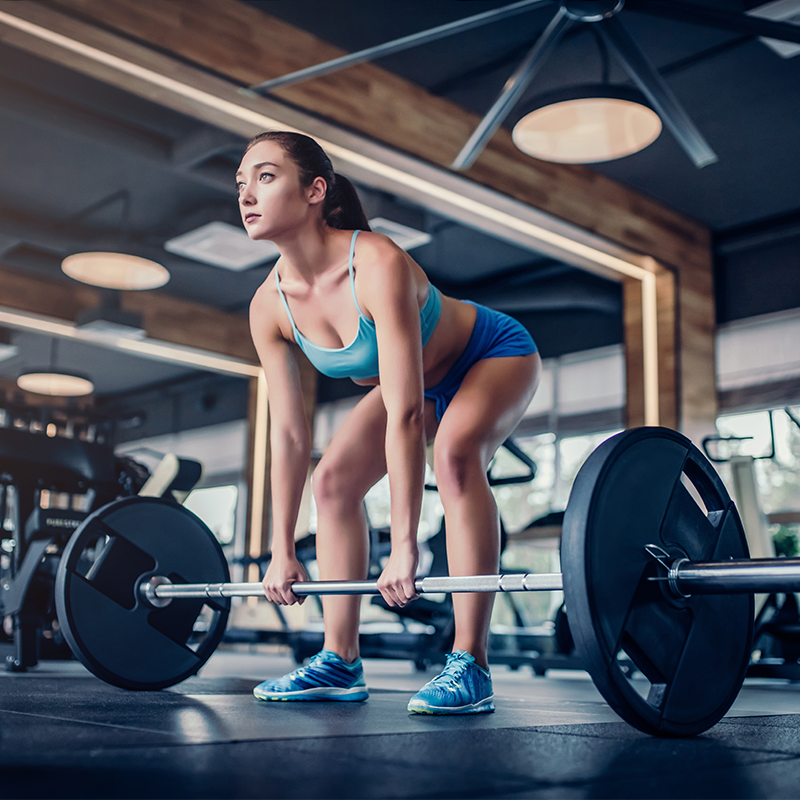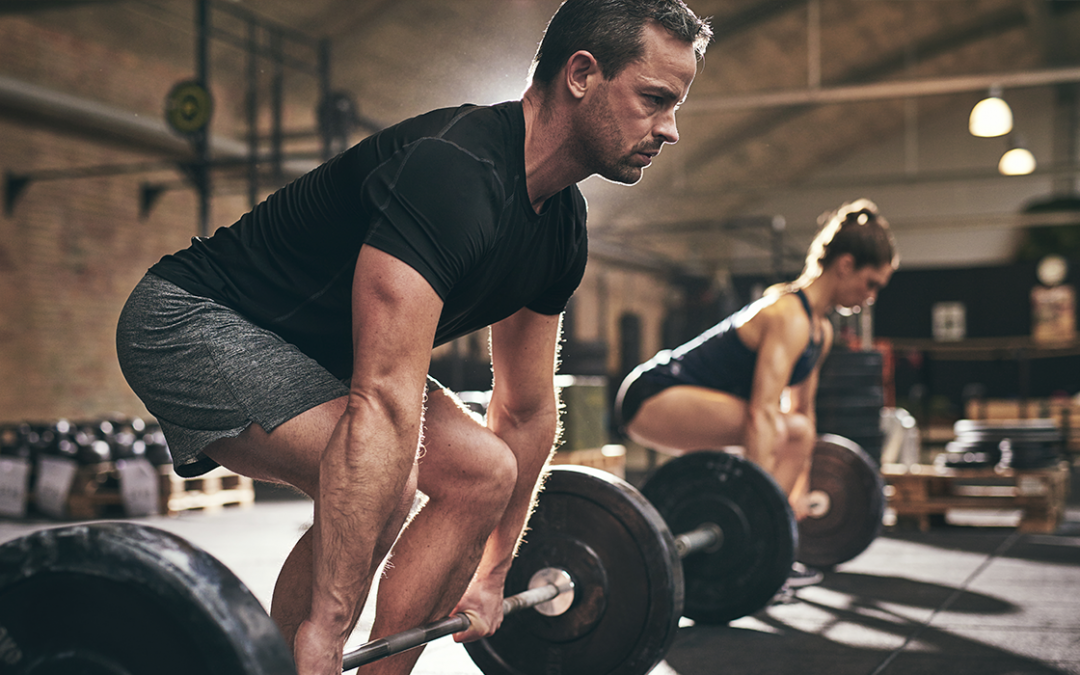The deadlift is often hailed as the most efficient compound exercise that exists. It’s a power lift that people around the world compete to do with the heaviest weight. It works muscles you didn’t even know about. If you think that it has no place in your workout routine, then you’re dead wrong. Pun intended.
Deadlifts don’t just change the efficiency of your workout; they can help transform your body composition as well. Weight lifting has a proven impact on physical appearance by growing the muscles and giving you a more toned appearance. And whilst it shouldn’t be all about looks, if you are interested in the aesthetic impact of your workout, then deadlifting is a great exercise to have in your routine.
Are you an employer? Hussle now offer flexible, discounted access to our fitness venues as an employee benefit. Elevate employee wellbeing.

What is a deadlift?
Deadlifts are actually dead simple. A barbell, or weight of your choice, is simply lifted from the ground to the same level as the hips. With a slight bend in the knees, you pick up the weight by hinging down from the hips to parallel the torso to the floor. You then lift so that the torso is back in line with the rest of the body.

How do deadlifts change your body?
So let’s get down to how deadlifts change your body. What are the physical deadlift benefits, and what effects can they have on the way you look.
Your posture. By engaging your core and using the muscles in your back, the deadlift can help improve your posture. This can help to reduce lower back pain. Strength training increases muscle in particular areas, which can help reduce injury caused by weaknesses in that area. The lower back is an excellent example of this.
Full body tone. We know how many muscles the deadlift can work, so repeatedly practising this movement will help you build and grow these muscle groups leading to greater muscle mass and definition—a well sought after benefit of strength training.
But it’s not all about the aesthetics. It’s easy to get tangled up in appearance focused motivations, and whilst it’s okay to strive for something like that, lifting offers so much more. The deadlift, in particular, will also help you lift heavier in real-life scenarios, which other exercises such as the chest press might not. And strength training reduces your risk of injury, as well as providing a whole host of general and mental health benefits.
What is the correct posture and form for a deadlift?
To protect your lower back, avoid back pain, ensure your targeting the right muscle groups, and generally be as efficient with your strength training as possible, it’s essential to get your form right.
The grip. You’ve got the option of either underhand or overhand grips for a deadlift. But both have limited grip strength. The mixed grip, where one hand adopts an overhand grip and the other an underhand grip, can allow you to lift heavier. Just make sure to keep mixing up which hand goes where to avoid developing any muscle imbalances.
The stance. From the starting position, make sure your grip is shoulder-width apart, the barbell is over the middle of your foot, and your head is lifted and facing forwards. It’s vital to keep your upper back straight and not hunched over. You can do this by making sure your chest is lifted as you perform the move.
The movement. Make it explosive. Lift the barbell to hip height in one motion. At the top, pull your shoulders back and squeeze your glutes before dropping the weight again.
How do you get started with the deadlift?
As with any lift, if it’s your first go, then start lifting light.
If you don’t quite feel comfortable walking over to the racks, you can get started with a set of dumbbells. The same logic applies, just hold and lift the same weight in each hand and stay balanced.
Start with a weight you can do 4 sets of 10 reps with. Test out the motion, making sure you can feel the muscles working in the right places, and there’s no pain in your back. A mirror can help make sure you’re not hunched over.
When your confidence begins to grow, add a final set of heavier weight. This is an excellent way to track your improvement and make continual jumps to the next weight up. Be patient with your progress.
The same principle applies when you’re hitting the barbells. When comfortable with the movement, you might prefer to work on your muscular strength and power by hitting fewer reps but at more weight. Lots of people like to test their one-rep max with exercises like the deadlift.
Just remember, form always comes first.
Commonly Asked Questions On Deadlifts
What muscles do deadlifts work?
Deadlifts are famous in the lifting world for the number of muscles they can work at one time.
This exercise mainly targets the glutes. But calls upon additional muscles to support the movement. In lifting language, a synergist is a muscle that helps another muscle complete a movement. In the case of the deadlift, that’s the quads and hamstrings, as well as muscles in the inner thigh and calves.
On top of this, you’ve also got the stabilisers: muscles still contracting without any movement to help you stabilise yourself. This includes muscles in your lower back like the spinal erectors and muscles in your upper back, your core, and your shoulders. The list goes on.
As you can already tell, the deadlift muscles engaged are extensive. Lifting in this way lets you maximise your training efforts and helps you to increase muscle strength across your entire body at an even and efficient rate.
What variations of the deadlift are there?
As with most exercises, there are many variations of the deadlift that you can try in your training. Each one will have a slight impact on the muscles targeted and engaged, letting you incorporate them into your workout in different ways.
The sumo deadlift uses an extra-wide stance and switches the focus from the glutes to the hips and the hamstrings.
The Romanian deadlift or stiff-legged deadlift also increases the targeting of the hamstrings and requires you to keep your legs straight during both the lifting and lowering of the movement.
There are plenty more variations you can have a go with too.
So now you know the muscles that deadlifts work, the way they increase your strength, the reasons that they’re hailed as a fantastic compound exercise, and the ways you can incorporate them into your training. The only thing left to do is to get going.
With Hussle, you can work out your way. Access thousands of gyms whenever and wherever you want, with one flexible pass.


